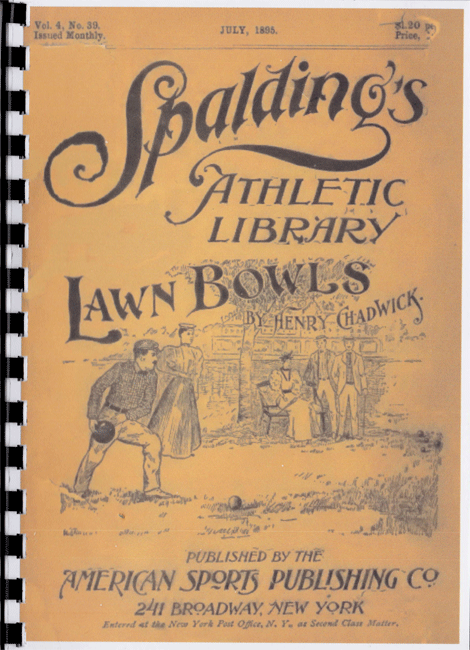| Title | Lawn Bowls | ||
| Editor | Henry Chadwick | ||
| Publisher | American Sports Publishing Co, New York, USA | ||
| First published | 1895 | ||
| ISBN | Pre-ISBN system | ||
| Edition reviewed | 1st (reprinted) | ||
| Hardback/softback | Softback | ||
| List price | $1.20 | ||
| Cover size (cm) (height x width) |
21.0 x 14.6 | ||
| Number of pages | 30 (excluding eight pages of advertisements) | ||
| Number of pages with | Coloured photos | Black & white photos | Line drawings |
| None | None | One | |
| Synopsis | This title is one of an increasing number of 'Public Domain' books now being printed across a multitude of genres. Public Domain books are those that are out of copyright and hence allow printing to be done from the original publication - often with an attractive selling price. Like most bowls books of this age, an original copy - assuming one became available - would almost certainly be prohibitively expensive, and so the opportunity to purchase this one for a few pounds was irresistible.
The book is just one in a series of over 300 in 'Spalding's Athletic Library'. Mr A G Spalding was one of the first in America to publish a handbook devoted to athletic sports (base ball) and followed it up at intervals with other titles on sports prominent in the late 1800s and early 1900s. Although the title on the cover is Lawn Bowls, it is significantly expanded on the title page to read as follows: The Game of Lawn Bowls as played under the code of rules of the Scottish Bowling Association, Glasgow, Scotland, together with a brief history of the game, as introduced in America by President Schepflin, of the Lawn Bowls Club of Dunellen, N.J., added to which are the technical terms used in the game; as also special instructions for novices, with general hints to players, etc.' The main body of the book is divided into the following chapters:
Overall, a small book of greatest interest to the bowls historian, but well worth a read just for the fascination of comparing the game then and now. |
||



